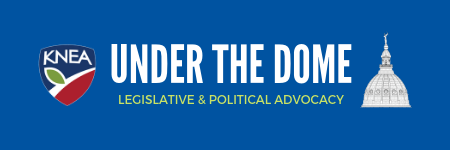Well, it’s here, the first major attack on public schools of the session. House Bill 2504 is titled “An Act concerning school districts; relating to the realignment thereof.” But as William Shakespeare famously said, “A rose by any other name would smell as sweet.”
Rep. John Bradford (R-Lansing) is not shy about taking credit for the bill. We suppose he wants us to believe that it is not a consolidation bill, but that’s exactly what it does.
In any county with fewer than 10,000 students, there will be a county-wide school district. In any county with more than 10,000 students, each school district will have at least 1,500 students. (That’s consolidation.)
The State Board of Education is going to draw up new school district boundaries and tell folks where they will go. But wait! There’s more! The SBOE will draw new boundaries every 10 years! That’s right. Your child or you as a teacher could wind up in a new school district every 10 years.
The bill will limit the number of administrators in the new districts. The state will take “surplus” property such as district vehicles and sell them to raise money for the state general fund. The so-called innovative school districts are kind of held harmless except that they can have territory added to them.
Now, specifically for our readers who are school employees, you could be a new employee of a newly “realigned” district every 10 years.
And what about our communities? Does it serve our communities to shift their school district boundaries every 10 years? What will this bill eventually do to our local schools? As the state requires more students in a school district, will they want to see more children in a school?
Ask your legislators how they feel about the forced consolidation of Kansas school districts, cutting the number of districts in half. Ask your legislators if redrawing school district boundaries every 10 years will provide the stability children and communities need to thrive. Ask your legislator if it isn’t better policy to let local communities make these decisions for themselves.
Find your legislator’s email by clicking here.
House members’ email addresses are firstname.lastname@house.ks.gov.


